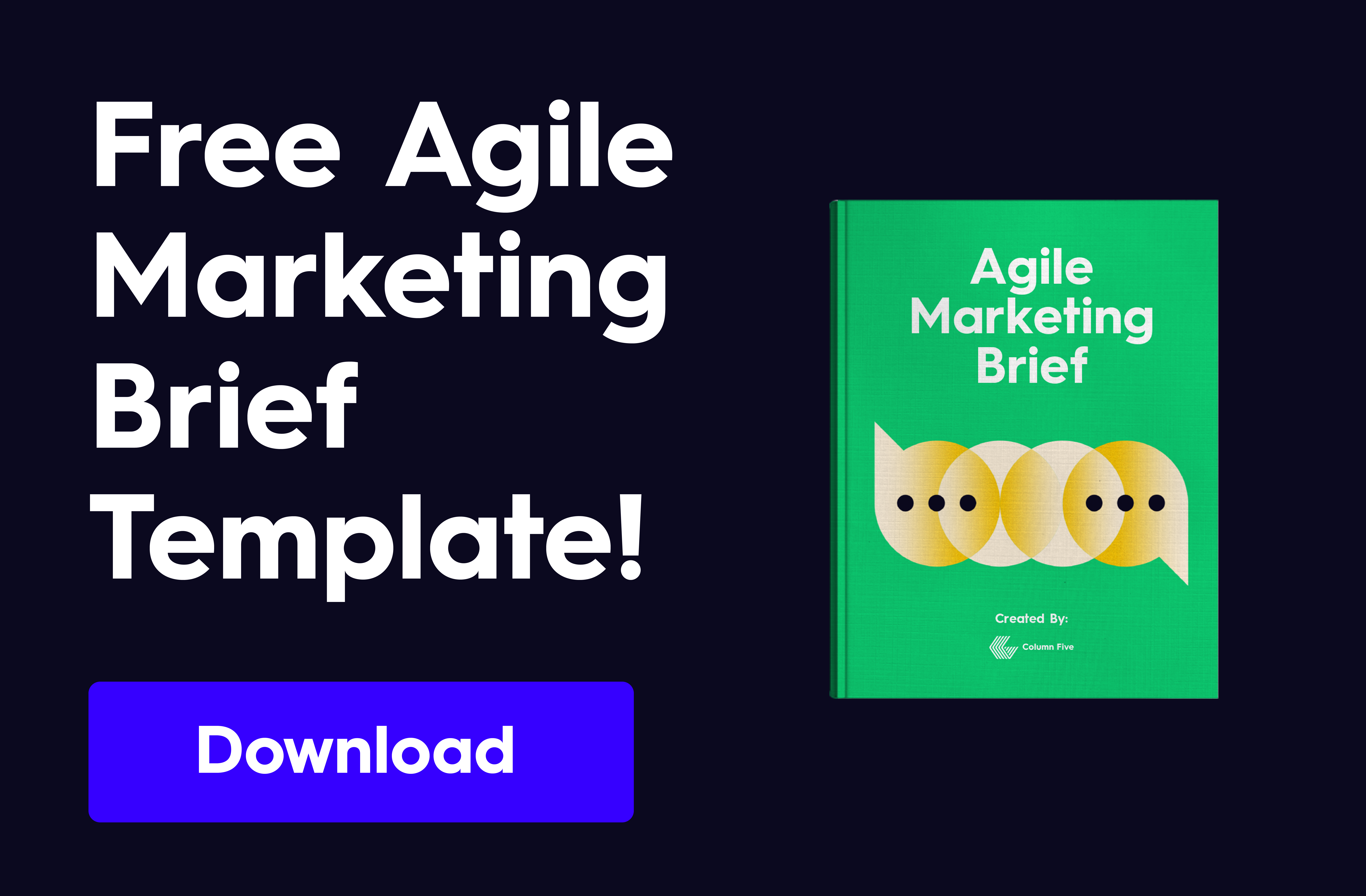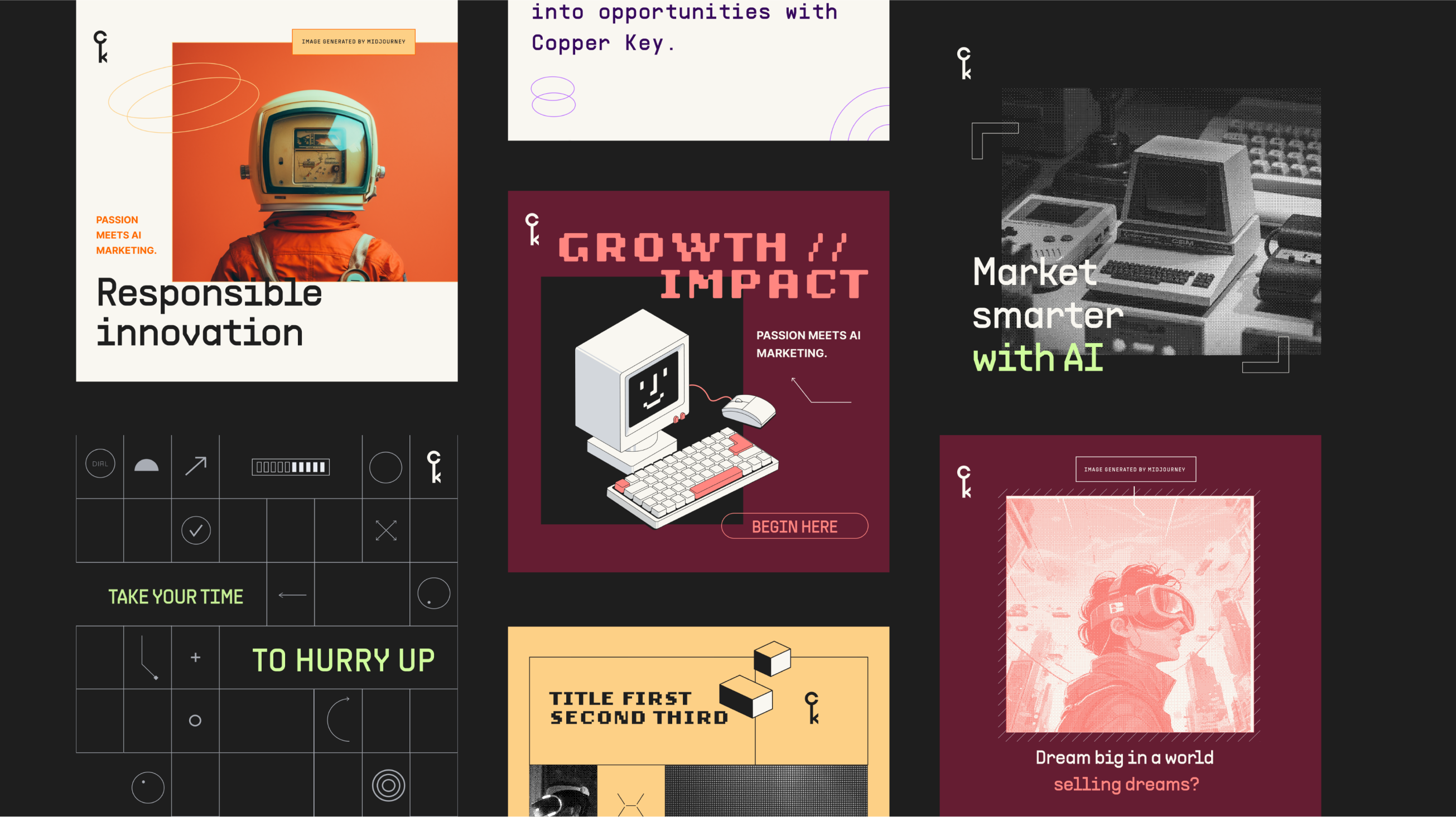No matter what your business is, you never want to make a big decision about it with bad data (or no data). But if you don’t have data that’s readily available, what do you do? Take a guess? Work off a hunch? We’ve seen too many people make that rookie mistake (and we’ve wasted plenty of our own time, money, and effort in the past), so we know that any time we have a big idea for our agency, we need to make smart choices based on market needs. So today we’re sharing the story of how we devised a new marketing experiment to test important ideas, get definitive answers, and make the right moves for our business.

The Question: Should We Launch a Brand-New Venture?
Back in 2023, AI made a big splash in the marketing world. The tech was new, people weren’t sure how to use it, and we wanted to guide our clients in the right direction. As this was a whole new opportunity, we considered building out a separate AI marketing venture called Copper Key.
Before investing in Copper Key, however, we wanted to know how much market demand there was for AI-focused services. The problem? This tech was so new that there wasn’t much existing data about the market. So how could we guage interest on our own? And how could we create a solid, repeatable method to test future ideas too? The answer came in the form of agile marketing.
The Agile Marketing Experiment
Agile marketing is a test-and-learn approach to marketing that allows you to test a single hypothesis in the market and track the results over a set amount of time. This method is both quick and cost-effective, helping you get the insights you need and—even better—use those insights to optimize your future test campaigns. Essentially, with this approach, you can feed your marketing machine info derived straight from your target audience and use it to improve your strategy and ROI over time.
Here’s how we used it to determine whether we should fully launch Copper Key.
1) We started with a single hypothesis.
Agile marketing uses the scientific approach to gather insights, so you always need to start with a single, specific, measurable hypothesis (translated into a question).
For Copper Key, after researching potential markets, competitors, personas, pain points, etc., we sought to answer a simple question: Could we roll out a paid media campaign that would provoke leads for our new AI services?
2) We designed a simple experiment.
We decided to test our hypothesis on LinkedIn, executing the experiment through three campaign sprints that ran for two weeks each (a six-week experiment in total).
For each sprint, we A/B tested different pairings of visuals and messaging to gauge which mix garnered the most interest from our audience.

3) We launched and observed.
After we put the campaign live, we monitored performance and adjusted to make sure the campaigns were up and running correctly. (This included adjustments like refining audiences, improving ad efficiency, and addressing any other issues.)
4) We optimized each sprint.
After each two-week sprint, we analyzed performance and applied those learnings to the next sprint, helping us optimize and improve over the whole campaign.
The result? Each campaign outperformed the previous, with CTRs of 3.54%, 4.06%, and 5.45%, respectively.
These figures were a staggering 155% higher than the industry average CTR for awareness ad campaigns on LinkedIn (per The Verdict 2.0 Report by Directiv).
5) We made our business decision.
After analyzing the data, we determined that although there was moderate market interest, our audience wasn’t quite ready to commit to AI marketing at the level that would require us to build out a separate venture. Ultimately, we decided to fold these offerings into our agency’s services instead.
Most importantly, this simple six-week experiment saved our team months of energy and investment in launching a new sub-brand. Whereas in the past, we may have stubbornly insisted on building a new venture for bragging rights, we now know that testing the market before that investment pays off much more in the long run. Additionally, by developing this smart test-and-learn process, we created a new framework to help both our agency and our clients test market ideas in a much more efficient way.
We also gained valuable insights about our audience’s preferences, which will influence our campaigns going forward (a huge win for us).
How You Can Use Agile Marketing to Win Too
We don’t gatekeep here, so we encourage everyone to experiment with agile marketing in their organizations. Whether you’re trying to make a big business move or optimize messaging for your new lead gen campaign, we’ve found it to be the most convenient and cost-effective way to get the market answers you need.
If you want to get started, see our guide to agile marketing to understand how it works, along with our step-by-step process to test your own hypotheses in 90-day sprints.
Experimentation, optimization, and growth are the ultimate goals.
The most important thing to remember is that while you might not always get the answer you want with this method, you will always get answers you can use. As you continue to learn, you’ll continue to improve your marketing strategy—one sprint at a time.





